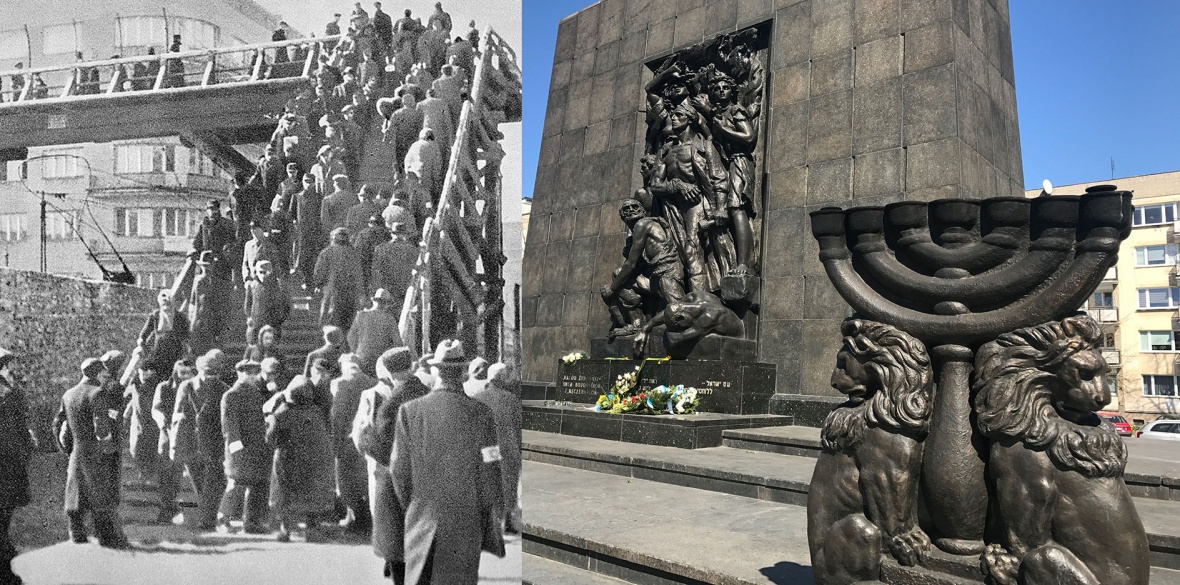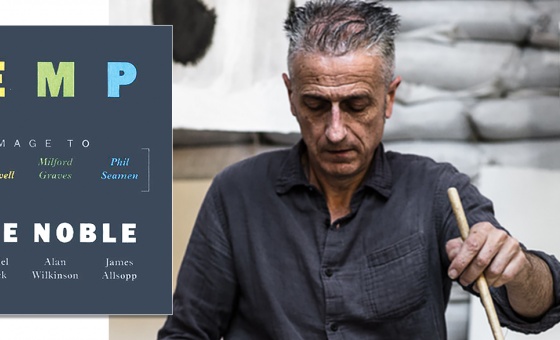This is the last article you can read this month
You can read more article this month
You can read more articles this month
Sorry your limit is up for this month
Reset on:
Please help support the Morning Star by subscribing here
IN THE heart of the former Warsaw Ghetto an 11-metre-high black monument rises out of a wide, empty square.
One side of the monument is a dramatic sculpture of muscular fighters, young men and women in ragged clothes and with basic weapons, around the central figure of Mordechai Anielewicz, commander of the Warsaw Ghetto Uprising when, in 1943, a remnant of the Jewish population for three weeks held off a Nazi army determined to obliterate Jewish life in Europe.
At the base of the sculpture are inscriptions in Polish, Yiddish and Hebrew honouring “The Jewish people — its fighters and martyrs.”
Designed by Nathan Rapoport and unveiled in April 1948, this was the earliest memorial to the Warsaw Ghetto Uprising.
The back of the monument is an understated bas-relief depicting Jews, heads bowed in defeat, walking through the streets to the Umschlagplatz, the railway loading platform.
There, they were packed into livestock trucks and transported to the death camp at Treblinka where most were murdered on arrival.
This dual image of the genocide of Europe’s Jews — resistance on one side, being led “like lambs to the slaughter” on the other — reflects the most fundamental of the conflicting narratives of the Holocaust.
It also encapsulates the political context in which it was created, and the moment when it was unveiled in April 1948, on the fifth anniversary of the Uprising.
The depiction of the Ghetto fighters on this monument powerfully celebrates their heroism while imbuing that heroism with the Soviet Union’s role in the defeat of Nazism.
It also represents the stereotype of the zionist pioneer, the strong Jew building the future state of Israel.
At the same time, the opposite side of the monument depicts the other dimension of that zionist view: that the diaspora was literally a dead end for Jews.
In the intervening years, just as the Holocaust as a whole has been fought over, instrumentalised and reinterpreted, the right to memorialise the victims of the Nazis, and the form of that memorialisation, has been claimed, commandeered, debated and fought over.
Many Holocaust monuments, like Rapoport’s, embody multiple and conflicting understandings and interpretations of the Nazi persecution, inviting reflection and generating debate.
Others discourage more than a singular reading. Some are modest, like the Stolpersteine (stumbling stones) embedded in the pavements, outside the former homes of individual victims of Nazi persecution — Jews, Sinti and Roma, homosexuals, disabled people, socialists, communists and other dissidents.

Others, like Auschwitz itself, which Poland’s post-war Soviet government turned into a museum immediately after the war, are vast, complex sites demanding continuing decision-making about how and whether to conserve them.
The regrowth of nationalism across the world, including in Poland, and the extreme rightward trajectory of Jewish nationalism, has been reflected in a struggle for the right to define, interpret and to own the collective memory of the Holocaust.
A striking example of this in Warsaw itself can be seen in a series of monuments entitled the Memorial Route of Jewish Martyrdom, following the path from the centre of the ghetto to the Umschlagplatz, installed between 1988 and 1997.
Those volatile years in Poland saw the rise of Solidarnosc, the end of communist government, and the establishment of Poland’s Third Republic.
One outcome of the uneven transition from one political system to another was a resurgence of far-right groups, consciously drawing inspiration from pre-war fascist and anti-semitic parties.
The struggle to end Soviet domination of Poland, the resistance to change from the old guard, the shift in Poland’s international relations, all affected Polish people’s sense of identity.
The communist government had attempted to imbue the memorialisation of the Warsaw Ghetto with the Soviet Union’s pivotal role in the defeat of Nazism.
The newly democratised state tried to construct a unified Polish-centred collective memory of the Nazi occupation.
The 1980s were also turbulent for Israel. The First Palestinian Intifada, which started in 1987, polarised Israeli opinion and started to fracture the consensus of support for Israel among diaspora Jews.
Writer Idith Zertal argues that the heroism of the ghetto fighters was appropriated by the zionist project, which defined diaspora Jews as passive and weak, unlike the “new Jews” carving out a state for themselves in Palestine.
Within this ideological framework, the Holocaust was a source of shame; but it was redeemed by the Warsaw Ghetto Uprising, which was claimed as part of the Israel’s independence narrative.
The chief historian at Yad Vashem, Israel’s Holocaust memorial centre, the late Israel Gutman, was a key consultant to the Polish committees that commissioned the monuments that comprise the Memorial Route of Jewish Martyrdom.
Unlike many other Holocaust memorials across Poland, they resemble tombstones, markers only of death.
And also in contrast to all the other monuments nearby, the superimposition of two complementary nationalist narratives on the memorialisation of the Jewish resistance is epitomised by the fact that the inscriptions on are only in Polish and Hebrew but not Yiddish, the language of the vast majority of the victims.
The agency, the resistance, the real lives of the people they commemorate have gone missing.
The view that collective memories are in competition — that one group’s narrative obliterates the memories of others — seems commonplace.
But Michael Rothberg, who writes about the Holocaust and cultural memory, argues that in reality, the opposite is true.
He says that collective memories should not be understood “as a zero-sum struggle over scarce resources,” but as an interaction which opens up a vista to collective memories of different peoples at different times and places.
He calls this “multidirectional memory.” In other words, the power of collective memory and the need for memorialisation rest on the constant reassessment and enlightenment gained from groups and individuals in different situations and at different historical moments reinterpreting and challenging each other’s understanding of historic events.
When Rapoport’s monument was unveiled in 1948, it stood alone, rising out of a four-metre-high pile of rubble stretching as far as the eye could see, which was all that remained of the ghetto.
A year later, the black US sociologist and civil rights activist, WEB du Bois made a visit to Poland which transformed his understanding of racism and oppression.
He wrote:
“I was taken out to the former ghetto. … There was complete and total waste, and a monument. And the monument brought back again the problem of race and religion, which so long had been my own particular and separate problem. … I rebuilt the story of this extraordinary resistance to oppression and wrong.
“The result … was not so much clearer understanding of the Jewish problem in the world as … a more complete understanding of the Negro problem. … The problem of slavery, emancipation, and caste in the United States was no longer … a separate and unique thing as I had so long conceived it.”
Over the decades since Du Bois saw it, Rapoport’s monument has been the focus of a struggle between the imposition of a singular interpretation of the Holocaust and interactive, dynamic interpretations that shine a light on other traumas and persecutions, and in turn are enlightened by them.
On this Holocaust Memorial Day, in the midst of the pandemic and against the backdrop of the renewed challenge to power by Black Lives Matter, we urgently need to open ourselves to enlightenment by different histories and experiences.








